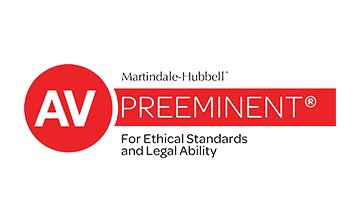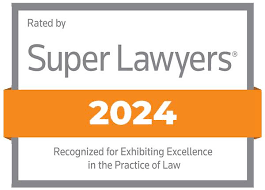Tracing Separate Property & Commingling in North Carolina Divorce
Quick answer: How do you trace separate property when funds were commingled in North Carolina? Separate assets (premarital, gift, inheritance) stay separate if you can trace them through accounts or into a new asset. Courts look for bank statements, source-of-funds proof, and a clear paper trail. If you cannot trace, the asset may be treated as marital. Growth may be split into passive (often separate) vs. active (often marital) appreciation, depending on facts and effort.
Protect what’s yours. We build a clean tracing record—statements, transfers, and schedules—so your premarital funds, gifts, or inheritance are recognized and distributed correctly.

Your North Carolina Tracing & Commingling Lawyer
Krispen Culbertson, North Carolina family lawyer with 20+ years proving separate property, tracing commingled funds, and addressing passive vs. active appreciation in equitable distribution—clean exhibits that courts, banks, and plan administrators can follow.
Memberships: North Carolina State Bar; local family law sections. Courts: District Court calendars statewide with regular hearings in Guilford County.
Start by situation
Fast answers
Burden of proof: The spouse claiming an asset is separate must trace it with reliable records. If tracing fails, courts may treat it as marital.
Commingling: Mixing funds is not fatal if source-of-funds and transfers are documented. We rebuild the trail month by month.
Gifts & title: Joint titling can signal a gift to the marriage. We analyze intent and timing to protect separate interests.
Growth: Passive gains (market/interest) may stay separate; active increases tied to effort are commonly marital. Facts decide.
Separate vs. marital property in NC
Separate property generally includes assets owned before marriage and assets received by gift or inheritance to one spouse. Marital property is typically acquired between the date of marriage and separation. We classify first, then trace.
Tracing through joint accounts
We rebuild deposits, withdrawals, and transfers using bank statements and a month-by-month ledger. Where needed, we apply source-of-funds methods and show that separate dollars went into (or out of) the asset you claim.
Separate down payments in the marital home
Premarital or inherited funds used for a down payment can be traced. We show the path from the separate account into closing, then address equity growth and whether any part is marital.
Investments and trading
For brokerage accounts, we tie lot-by-lot or tranche-level records to separate deposits, then separate passive market gains from marital contributions or trading activity.
Retirement balances and rollovers
We identify premarital balances at the date of marriage, adjustments for rollovers, and marital contributions thereafter. Statements, plan summaries, and employer records matter.
Donative intent and joint title
When title is placed jointly, courts may look for donative intent. We present the full context—why title changed, who paid, and how funds were handled—to protect your separate claim.
Passive vs. active appreciation
We analyze whether growth was market-driven (passive) or due to either spouse’s efforts, contributions, or management (active). The result can change how increases are divided.
Forensic schedules and exhibits
- Statement stack: monthly bank/brokerage statements for the tracing period
- Transaction ledger: deposits, transfers, and checks tied to sources
- Closing files, HUD/CD, titles, deeds, and account opening docs
- Retirement year-end summaries and beginning-balance proofs
What to bring and your first 72 hours
Document checklist
- Pre-marriage and post-separation account statements (12–24 months around those dates)
- Gift/inheritance letters or estate documents
- Home closing packet; refinance/HELOC records
- Retirement plan statements and rollover confirmations
Your first 72 hours with our team
1) Classify
Identify assets and which are likely separate vs. marital.
2) Gather
Request statements, closing files, and employer records.
3) Trace
Build a ledger tying sources to today’s asset.
4) Quantify
Separate passive vs. active growth and prepare exhibits.
5) Order
Draft settlement or order language that banks and plans will follow.
Related: Equitable Distribution • Business Valuation • RSUs & Stock Options • Tax, Retirement & QDRO • Mediation & Settlement
FAQs
What counts as separate property in North Carolina?
Did I ruin my separate claim by putting the money in a joint account?
Is growth on separate assets also separate?
What if we retitled an asset into both names?
Do I need a forensic accountant?
Why North Carolina families choose Culbertson & Associates
- 20+ years tracing separate property and handling commingling disputes
- Bank-ready exhibits and orders institutions will follow
- Clear strategies for gifts, title changes, and appreciation
- Settlement-first approach with trial-ready proof if needed
Client reviews
D. Harper — “They traced my inheritance through a joint account and protected it. The ledger was easy for the judge to follow.”
M. Lee — “Krispen showed our home down payment came from premarital funds. The final order spelled out the math clearly.”
R. Collins — “Calm, organized, and thorough. Bank statements, closing papers, everything lined up. Great result.”
T. Alvarez — “They separated passive market gains from marital contributions so the division was fair.”
S. Patel — “Culbertson and Associates built exhibits that made sense to the court and the bank. No confusion at all.”
K. Brown — “Straight talk and a clean plan. We settled quickly with the tracing proof in hand.”
Visit Our Greensboro Office
Culbertson & Associates
315 Spring Garden St Ste #300, Greensboro, NC 27401
(336) 272-4299 • culbertsonatlaw.com
Hours: Mon–Fri 8:30 AM–5:00 PM • Area served: North Carolina


Contact us now
book consultation







No Comments
Sorry, the comment form is closed at this time.